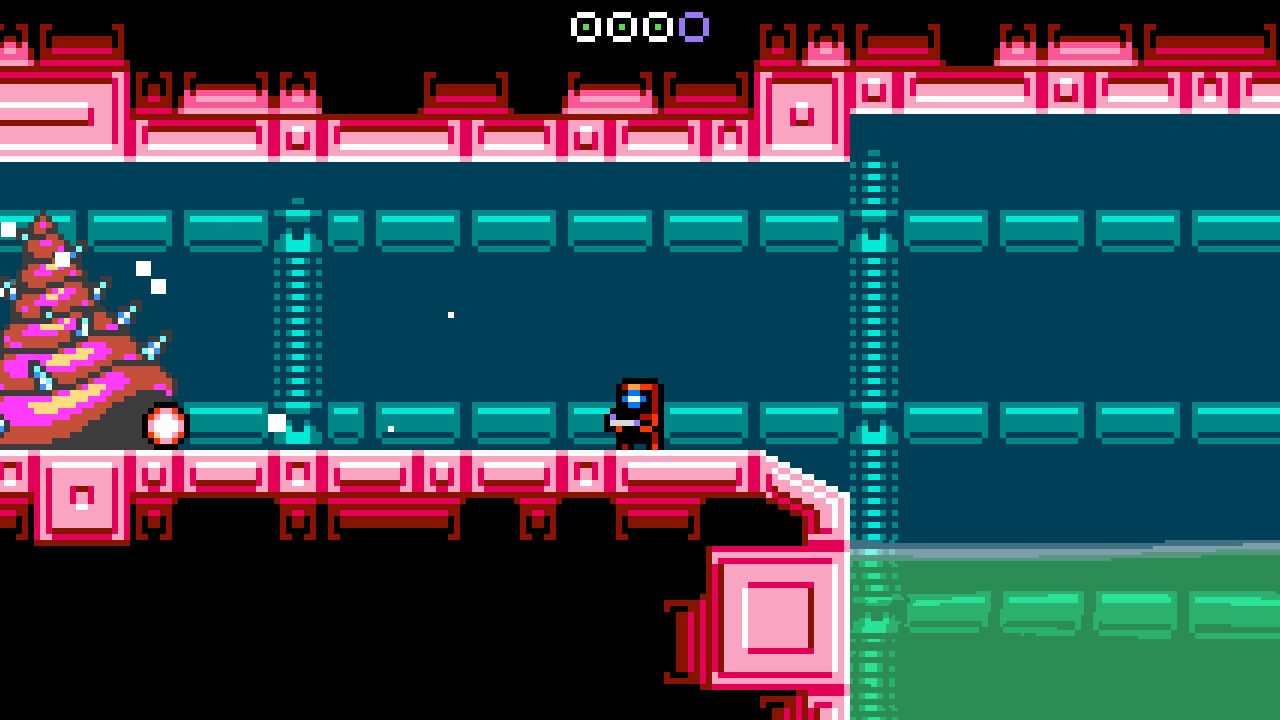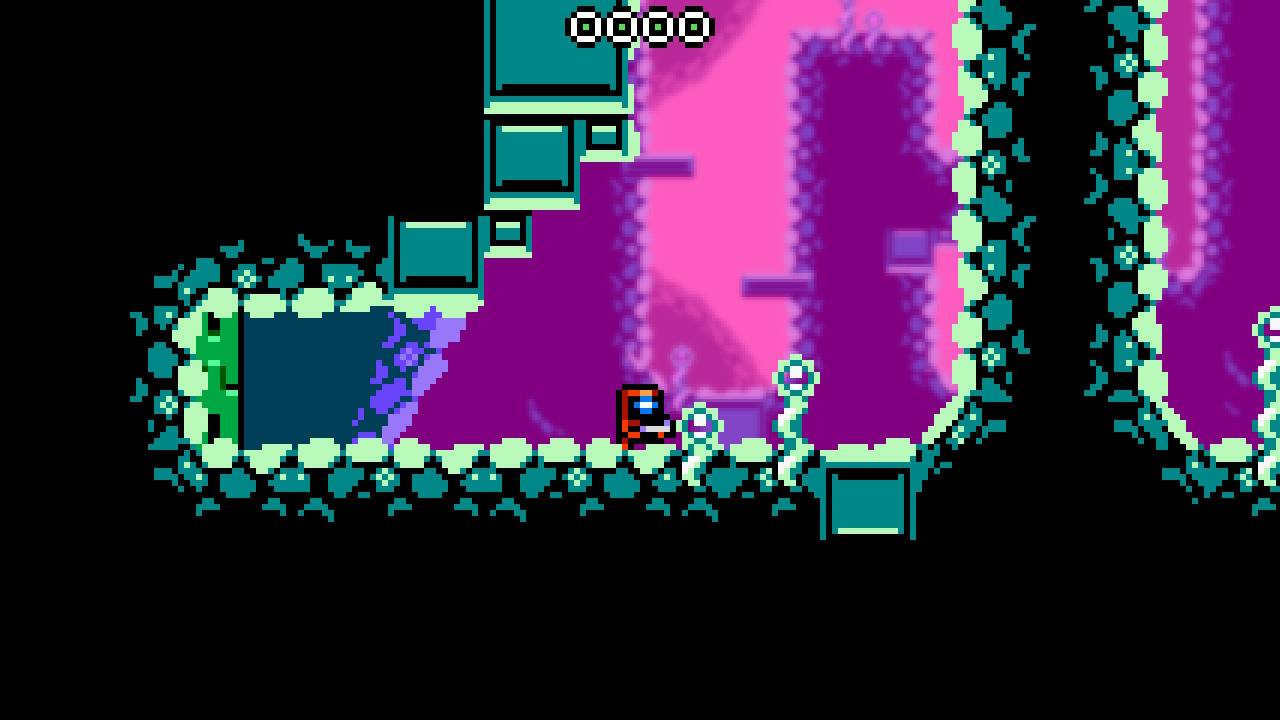Xeodrifter
This Metroidvania is minimal in every way, but manages to deliver a great gameplay experience by focussing on the essentials.

I have a confession. I’ve never played a Metroid game. I know, I know: hand in my gaming card, how can I even pretend to have any credibility when it comes to reviewing video games, right? And it gets worse: even though I’ve played one or two entries in the Castlevania series, I haven’t even played Symphony of the Night, the one that lent its suffix to the Metroidvania genre that I’ve become so fond of.
It’s a cross I’ll just have to bear for now — at least until I can be bothered to play them on NSO. For now, though, I’m thinking Xeodrifter is a pretty decent substitute, at least for the original Metroid.

Xeodrifter is ultra-minimal yet, if my understanding of Metroid is even slightly accurate (gained as it was from a quick few minutes scanning a gameplay video), still manages to improve on the old 8-bit games it pays homage to in some key respects.
First off, while its graphics are still all chunky pixels and limited colour palettes, it’s at least brighter and more refined than its NES counterpart. Backgrounds are more detailed — something which actually becomes relevant later in the game — and plenty of smooth animation helps to refine the experience.
But, far more importantly, there’s a level of usability that, understandably, simply wasn’t present 35 years ago. It’s all the little things that add up to make an experience enjoyable: proper saving — checkpoints, even! — fewer moments of sheer frustration, a better explanation of what the heck’s going on. I don’t want to spend this entire review bagging on Metroid, though, so I’ll stop with the comparisons about now. What really matters is how Xeodrifter plays today, not how it compares with some game that’s older than half the world’s population. And, as far as I’m concerned, Xeodrifter plays really well.

It’s an excellent size for a game, more a mini-Metroidvania than a vast, sprawling behemoth like Hollow Knight. This is one you could polish off in a weekend — heck, even a long single sitting, if that’s how you roll. I chose to break it into 2 or 3 sessions, but it had me gripped enough to pull me back each time, at the expense of anything more substantial vying for my attention.
The setting is not much to get excited about. Despite four unique environments, which do have some interesting properties to differentiate them, everything looks a bit too generic to really stand out. But that’s no great loss since it focuses everything on your main task: exploring the map, collecting the upgrades, opening up previously inaccessible routes, and fighting a series of bosses until completion. Actually, the same boss, which somehow learns new moves each time you face it. God knows why it doesn’t just unleash its final attack on you during the first encounter, preferring to give you the opportunity to learn how to deal with it gradually, over a series of meet-ups. Well, it’s obvious of course: gameplay wins over plot or logical immersion.

And Xeodrifter just about nails its gameplay, a few minor complaints aside. First, it balances everything ‘just so’. Given that it’s a short game, it introduces a generous number of upgrades, making good use of the classic ‘open up previously unavailable areas mechanic’ to great effect. One power-up in particular is very nicely implemented: the ‘layer switcher’. This allows you to move between foreground and background, transitioning between the two layers to explore paths that are only passable via one route or the other. It makes excellent use of the constrained map and it’s a really nice visual effect to boot.
Some of the other main upgrades are less inspiring, but they all serve a useful purpose, whether it’s navigating water with the submarine, or sprinting across the hazardous pink goo. Alongside these abilities come upgrades to your gun, and — again — the system here is simple but the game makes the most of it. Upgrades are scattered about, and each one can be applied in a number of different ways to affect how bullets fire: speed, power, direction, etc. These can be switched up at any time, and it’s an excellent way of adding variety to a single weapon.

The boss fights in Xeodrifter are, as already mentioned, somewhat repetitive, but they have a rewarding level of difficulty, and the upgrades you gain can — and must — be used against each iteration, as it develops its powers. This can be easy to miss — in fact, there’s a lot that’s easy to miss here since explanation is scant. From the gun upgrades to boss behaviour, and even how some of the powers work, you’ll need to figure everything out with very little help on offer. But it’s all so manageable, pitched at such a reasonable level of difficulty, that nothing’s really going to slow down your progress for long.
There are one or two small annoyances. The jumping can be really disconcerting at times, with possibly too much momentum propelling you into enemy paths when you land. Secret areas are often of the ‘totally hidden’ type, where you simply need to try pushing against walls that turn out to be secret passageways. This makes for some manual hunting around rather than calling on any clever detective skills. And the early game can be a bit frustrating since health is tricky to regain. But, overall, the positives vastly outweigh these gripes and Xeodrifter is up there with Gato Roboto as the best example of what retro mini-Metroidvanias have to offer.

Verdict
😀
Xeodrifter is such a good example of a very small but excellently formed Metroidvania, that I think it should be on some game development course somewhere. A perfect game to play through in a weekend, especially for those who like the genre’s classic ingredients, but aren’t keen on getting lost exploring vast maps.
I played Xeodrifter on Nintendo Switch, for about 3–4 hours. In that time, I went all-out to collect as many of the items as I could, and I finished with one collectible still to find. After initial reluctance, I went back to the game and found that last power-up pretty quickly. It’s not a game to revisit immediately, but one that I could imagine playing through again in a couple of years.
I paid just 89p for Xeodrifter which made the game feel like amazing value for money. To be honest, I’m not sure I would shell out the full £8.99 normal price, having played it through, but it goes on sale every few months. The game was developed by Jools Watsham & Matthew Gambrell and published by AtooiLLC.
